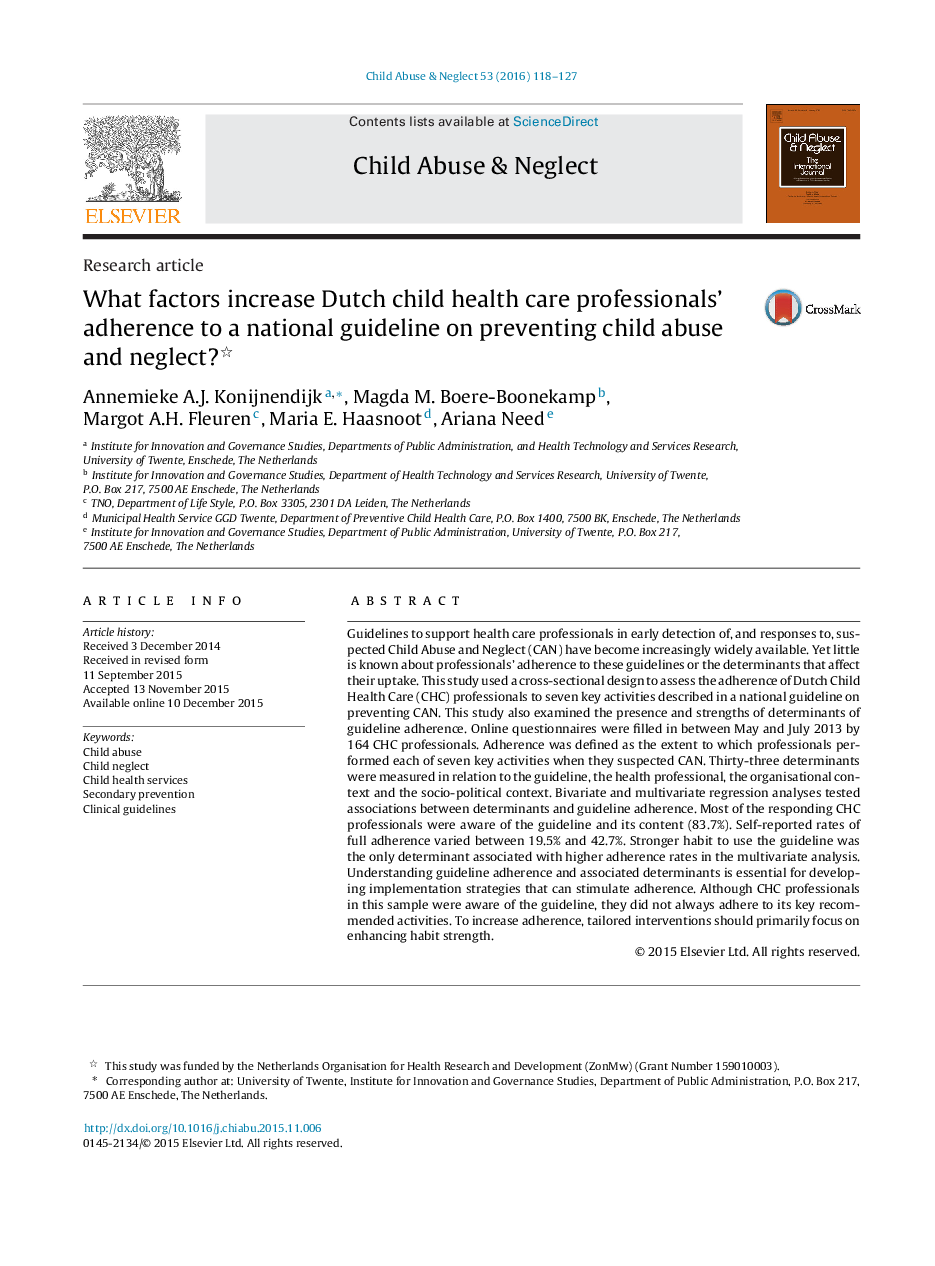| Article ID | Journal | Published Year | Pages | File Type |
|---|---|---|---|---|
| 344536 | Child Abuse & Neglect | 2016 | 10 Pages |
Guidelines to support health care professionals in early detection of, and responses to, suspected Child Abuse and Neglect (CAN) have become increasingly widely available. Yet little is known about professionals’ adherence to these guidelines or the determinants that affect their uptake. This study used a cross-sectional design to assess the adherence of Dutch Child Health Care (CHC) professionals to seven key activities described in a national guideline on preventing CAN. This study also examined the presence and strengths of determinants of guideline adherence. Online questionnaires were filled in between May and July 2013 by 164 CHC professionals. Adherence was defined as the extent to which professionals performed each of seven key activities when they suspected CAN. Thirty-three determinants were measured in relation to the guideline, the health professional, the organisational context and the socio-political context. Bivariate and multivariate regression analyses tested associations between determinants and guideline adherence. Most of the responding CHC professionals were aware of the guideline and its content (83.7%). Self-reported rates of full adherence varied between 19.5% and 42.7%. Stronger habit to use the guideline was the only determinant associated with higher adherence rates in the multivariate analysis. Understanding guideline adherence and associated determinants is essential for developing implementation strategies that can stimulate adherence. Although CHC professionals in this sample were aware of the guideline, they did not always adhere to its key recommended activities. To increase adherence, tailored interventions should primarily focus on enhancing habit strength.
